By Sarah Wilme
Last September, I along with the core of Team Bitter End was lining up for the Stamford Vineyard Race aboard two separate boats. For most of my teammates, this was their first offshore race. The experience ignited something in each of us, and nine months later we were hurtling towards Bermuda in the Gibbs Hill Lighthouse Division as one of the youngest teams in the history of the Newport Bermuda Race onboard Oakcliff’s Farr 40 Blue. With encouragement from pre-race coach Richard Feeny and Oakcliff Sailing’s training program which brought in rockstar coach Libby Greenhalgh and an excellent sponsor Bitter End Yacht Club, we went from green big boat racers to prepared bluewater competitors.
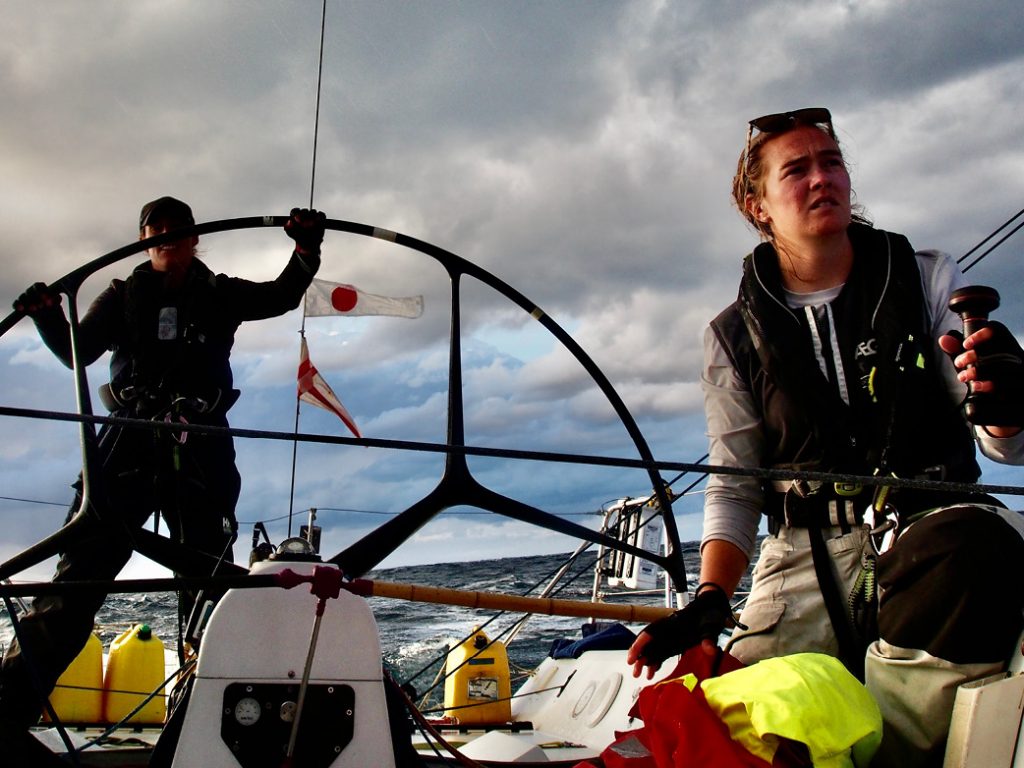
The team sails out of a squall and into a rainstorm, with coach Allie Surrette on helm, and crew member Elizabeth Gardner and coach coach Katy Zimmerman trimming the headsail.
We were trained, focused and ready to go! Then, as our start was approaching the race committee signaled a postponement. Sailors and spectators watched a major squall pass right by Castle Hill Lighthouse. Helmsperson Sophia Comiskey remembers, “Right before starting, there was a collective calm on the boat, mixed with a bit of nerves and stress about the weather conditions we were experiencing, and what we knew was to come.” In an instant, we went from preparing to ping the pin to a mad dash for a controlled douse. After a quick recovery and a loss of breeze, we found a line of better air, and began moving forward on the overall fleet. We had only just started. It was stormy, windy and rainy and we had a long journey ahead. Our team kept that collective calm, and sure enough we were quickly reminded to stay positive when a full rainbow appeared just to windward of us.
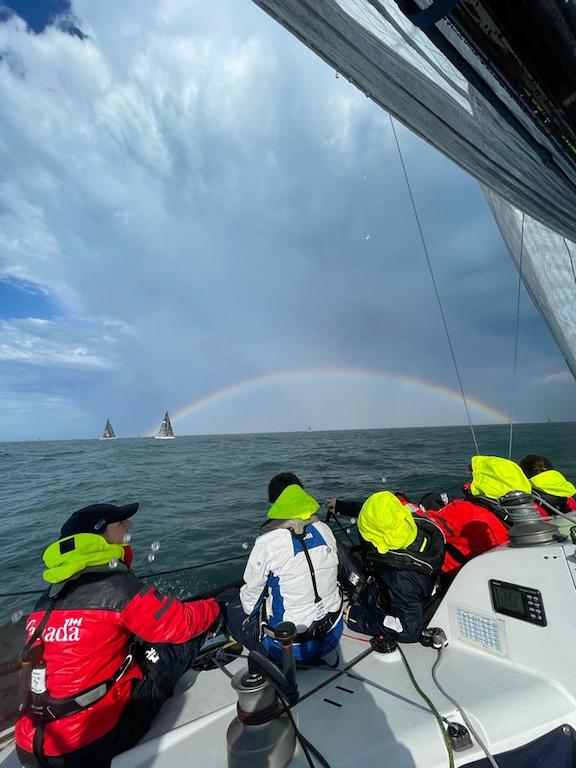
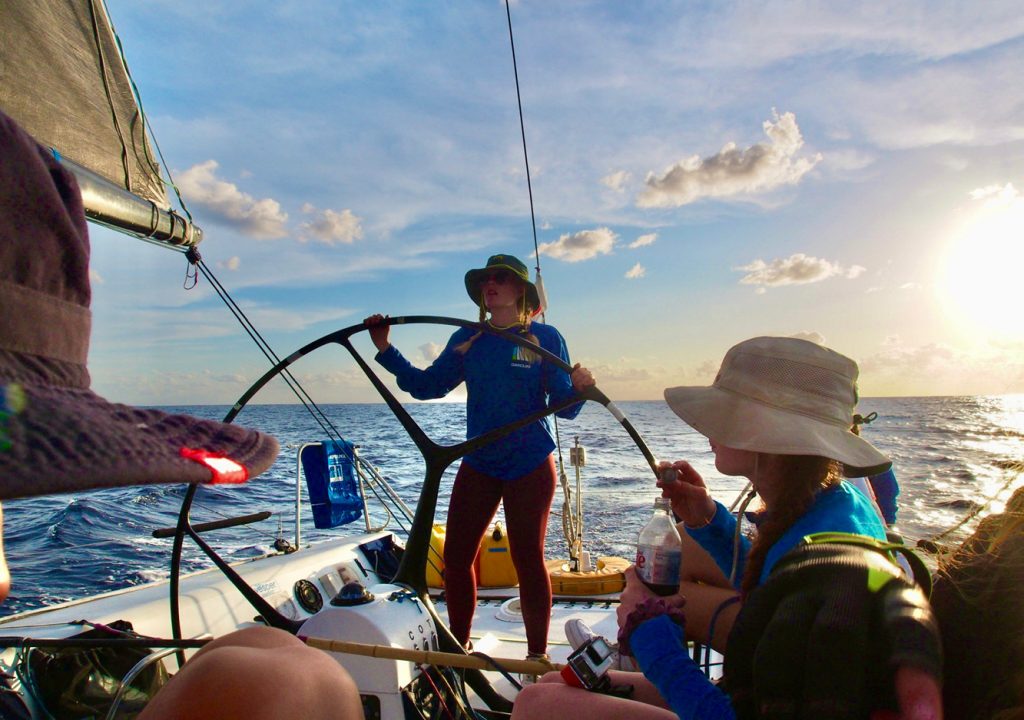
Enjoying a last sunset at sea during the final leg of the race.
Every challenge came with an opportunity. After some technical difficulties updating weather data, we chose to largely stay east of the rhumbline and found the large eddy in the Gulf Stream we hoped for, with currents that gave us a 3.5 knot boost on day two. On the morning of our third day at sea, our gooseneck pin started to pull out. We were lucky to catch the issue, repair it and we were back on course within ninety minutes. Sailing fast was our main focus, but without taking too many risks. We later learned that the small holes in the sail that we repaired were nothing compared to some of the damage other teams had sustained. By choosing to change to a smaller jib earlier, or anticipate conditions and sail a gentler angle, we not only saved gear, but also precious time and miles that other teams lost when they were slowed with damage or overpowered by a squall.
Over the course of this journey, there was much more to learn beyond sail repair. There was a true sense of sportsmanship amongst our team and our competitors. We were 300 miles into the race when our kite was severely wrapped around the headstay during a jibe. It took eight of the twelve crew on the bow to get the sail down in one piece. Another boat, Phantom, checked in on us over the radio, and even though we had the situation under control by that point, it was nice to know everyone was looking out for their fellow sailors.
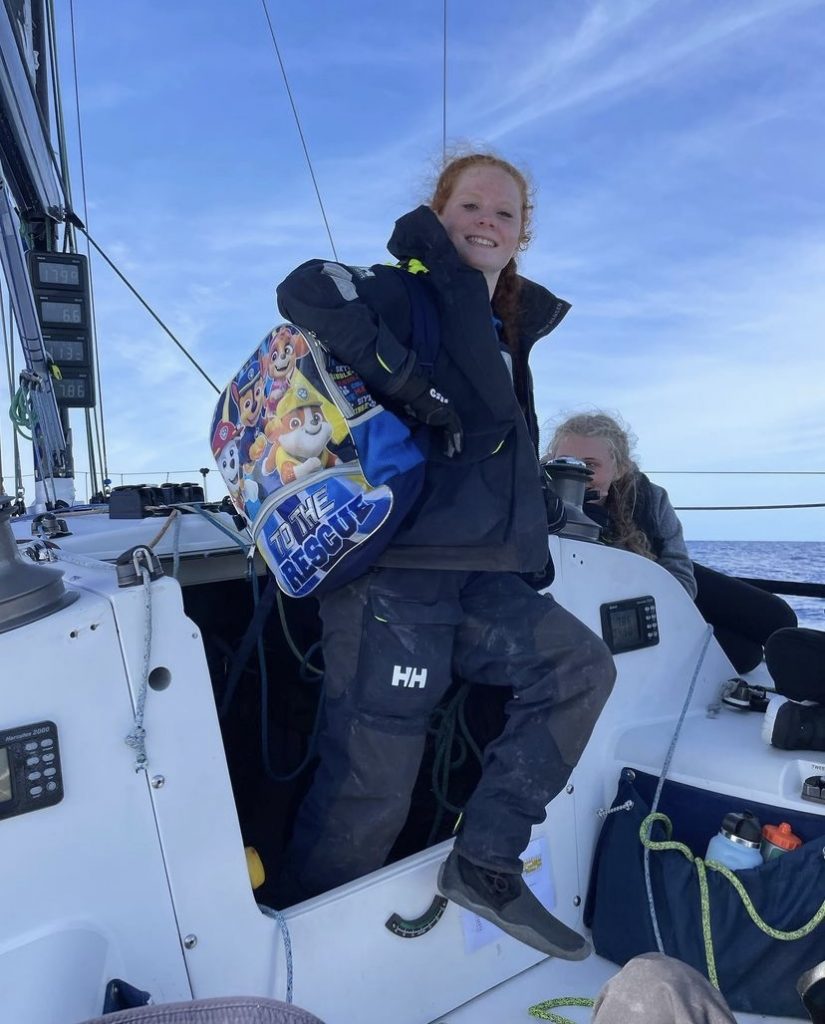
It wasn’t until we had been out for three days and we began to approach Bermuda that I was able to see the converging fleet on AIS. We were doing well, with fast boats like a Class40 jibing behind us. We ended up finishing 28th in line honors, and 8th overall in Gibbs Hill.
Once in Bermuda, we were welcomed by teams who continued to cheer on boats as they arrived into the port after crossing that finish line at Gibbs Hill Lighthouse. We had developed a sense of camaraderie, an essential part of the offshore sailing experience.
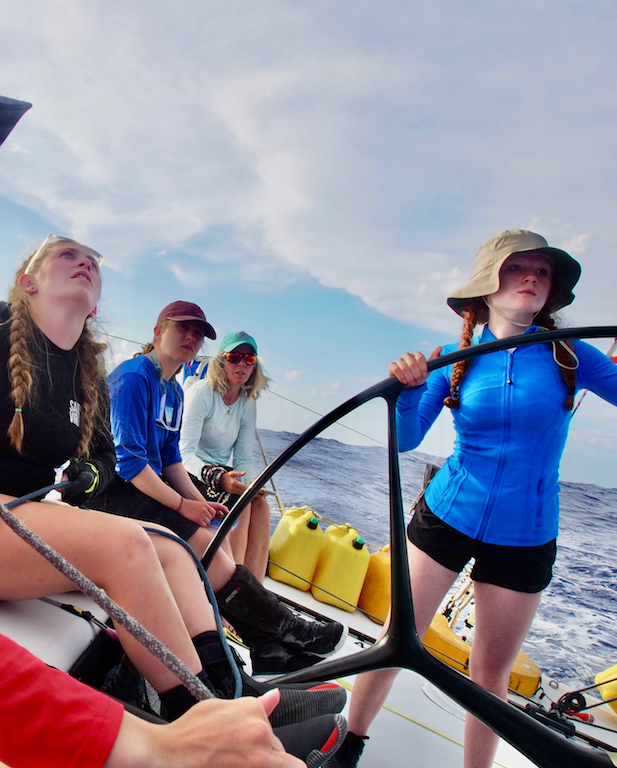
Crew members Milla Clarke, Elizabeth Gardner, and Olivia Vincent, with coaches Libby Greenhalgh and Maya Hoffman, lead the boat into heavier wind.
The onboard team grew before and during the race as we gained experience. Knowing our core crew so well beforehand really helped with adjusting to offshore life. Most of us sailed smaller boats, J/22s and 420s, in Rhode Island. We also trained in Figaro 2s, so we had some idea of who tended to get seasick or who was dialed in on a night watch. Main trimmer Gigi Fischer recalls, “Throughout the race our ability grew tremendously, both as individual sailors and as an offshore team. There’s always a certain adjustment period before everyone figures out how to maintain themselves physically and mentally, whether that’s managing your sleep schedule, diet or seasickness. Everyone reacts differently to living offshore. Our team quickly found our groove and there was an almost immediate spike not only in morale, but also in sailing performance.” We had been training on Oakcliff Farr 40 Blue since April, yet compared to our normal boats, everything was bigger, faster, and yes, wetter. It was an ongoing learning experience and a game of endurance for each crew member.
We gained a few new crew members throughout the season, who helped mentor less experienced crew. Rounding out the team was Canadian Nacra sailor Allie Surrette, along with Great Lakes racer Katy Zimmerman, and our boat captain for the race and skipper for the delivery home, Maya Hoffman. Having their experience on board was crucial in upskilling our trimmers and bow team. Maya stepped up after the Block Island Race to act as a tactical leader onboard, keeping the boat’s systems ship-shape. Maya shares, “During pre-race training and races like Block Island and the New York Yacht Club Annual, I mostly oversaw and coached the bow team. Then, as the bow team’s confidence and skills grew and they became more independent, I was able to show them ways to optimize speed and better understand the physics of the boat.”
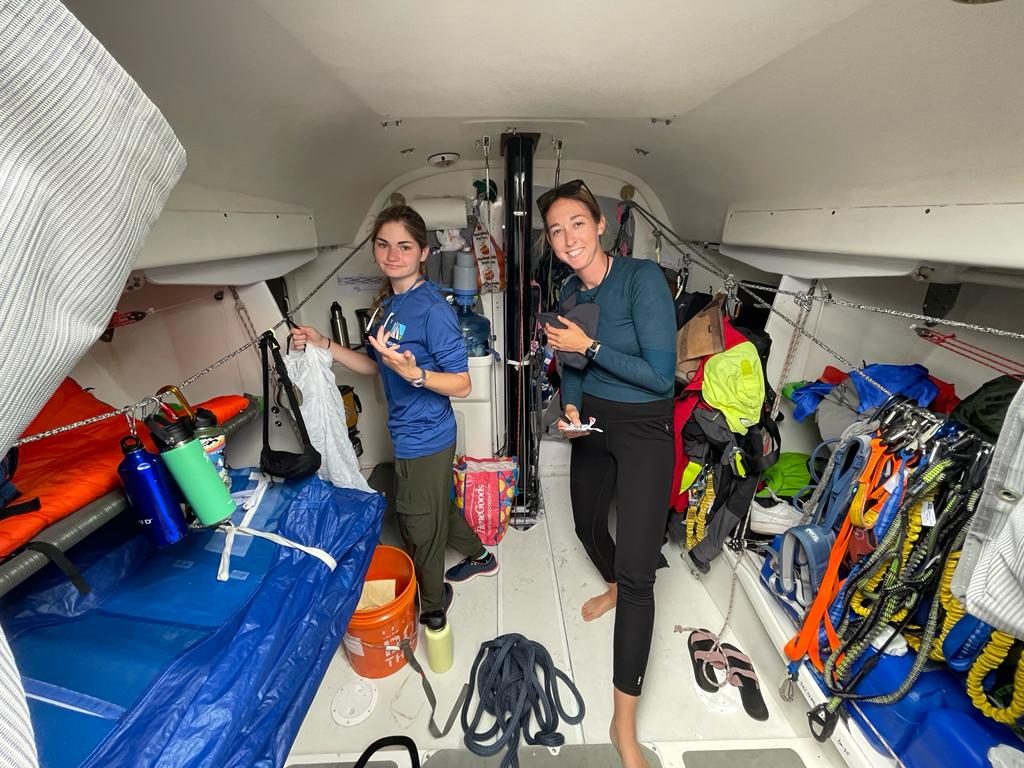
Most of us were very young the year Team SCA competed in The Volvo Ocean Race, and my teammates and I remember visiting the Newport Race Village, and how cool it was to see women take on a challenge like that. Now we were racing with SCA’s navigator Libby Greenhalgh coaching us and it felt like we got to keep a little spirit of that team alive. (Editor’s note: Team SCA was only eight years ago and all of the crew are still alive and sailing.)
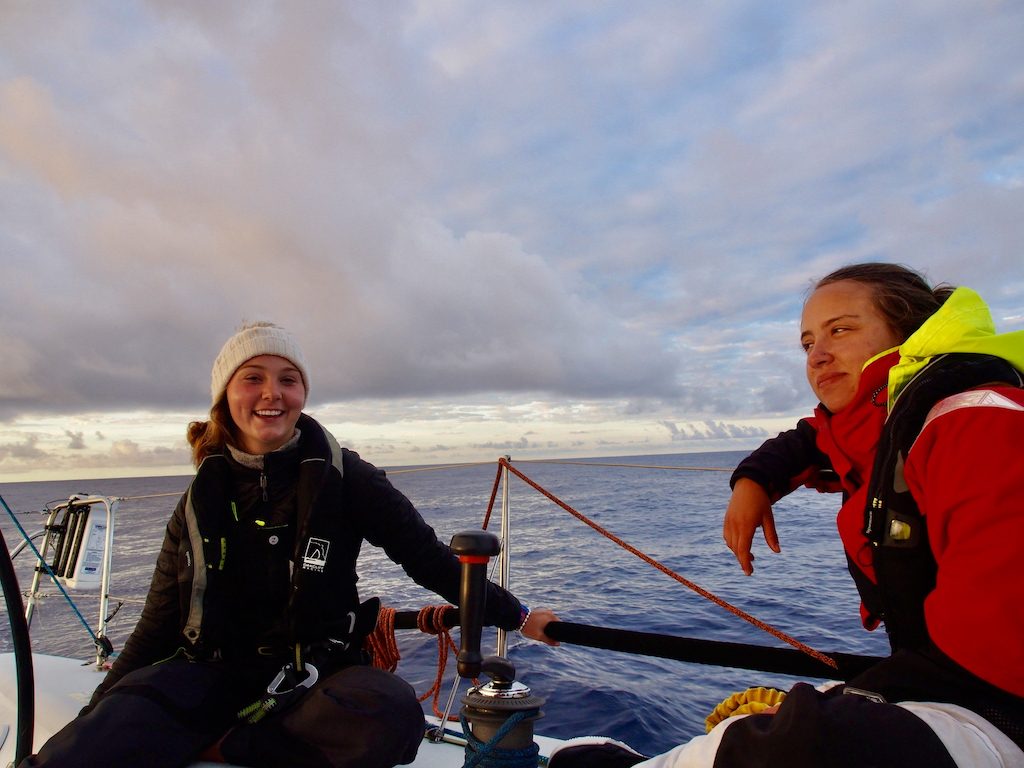
Crew member Phoebe Lee and coach Maya Hoffman smile as the sun rises after a long night.
The hope is that our performance, as well as the win for Oakcliff graduate Sara Stone and Cat Hunt aboard the Sunfast 3300 Alchemist in the inaugural Bermuda Short-Handed Return Race, opens doors for more women moving up the ranks offshore. Being able to take leadership roles, and race in strength-based positions on the boat that are dominated by men, is an opportunity unique to a team like Bitter End. In the 152-year history of the Bermuda Race, we are proud to be the youngest all-female crew to ever compete.
So, what’s next for Team Bitter End? Even we are trying to figure that out. The hope is to race together more this summer, before some of us go off to college or start jobs in the fall. We’ll all still be racing smaller boats, just now knowing that if we can handle sailing to Bermuda, anything is possible. ■
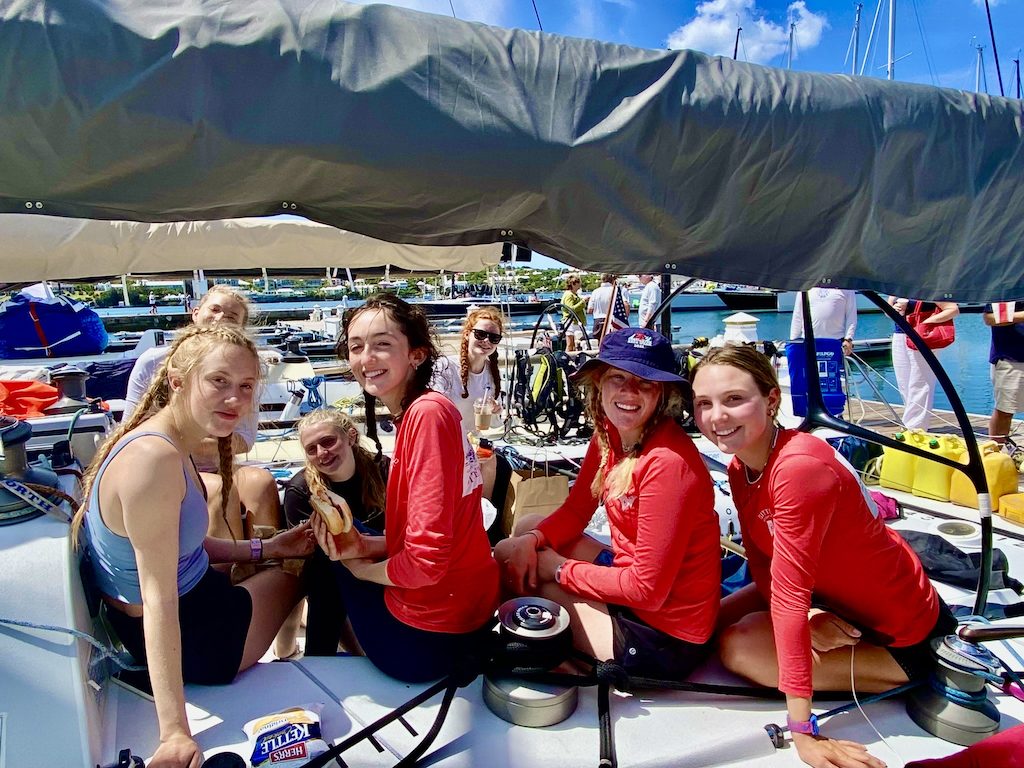
Sunshine and sammies at the Royal Bermuda Yacht Club the morning after finishing the race.
Team Bitter End’s navigator Sarah Wilme is a second year student studying boatbuilding and restoration at IRYS School of Technology and Trades. She grew up sailing classics on her family’s Kirie 32 and a Herreshoff 12 ½. As a navigator, she’s interested in pursuing marine trades with a focus on rigging and boatbuilding. Sarah’s goal is to race around the world someday. With opportunities thanks to Oakcliff and Bitter End Yacht Club, Sarah is building a lifelong passion for a career in sailing.



